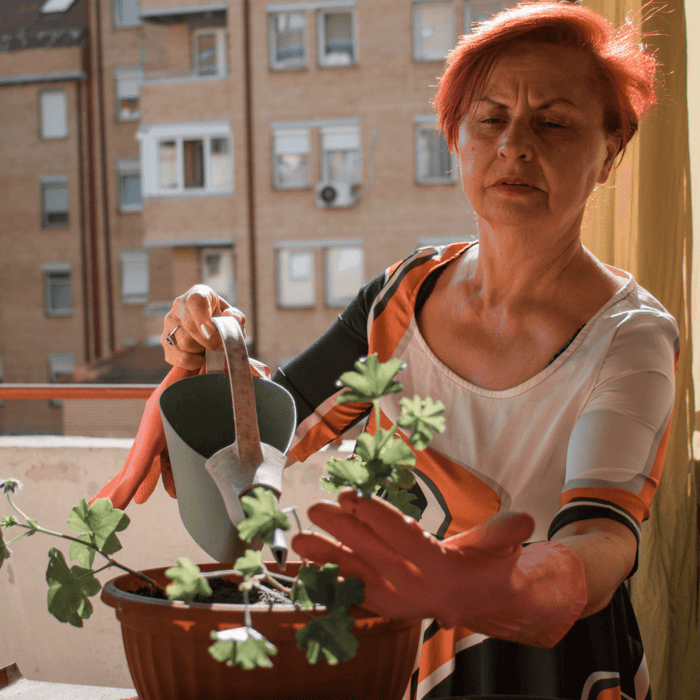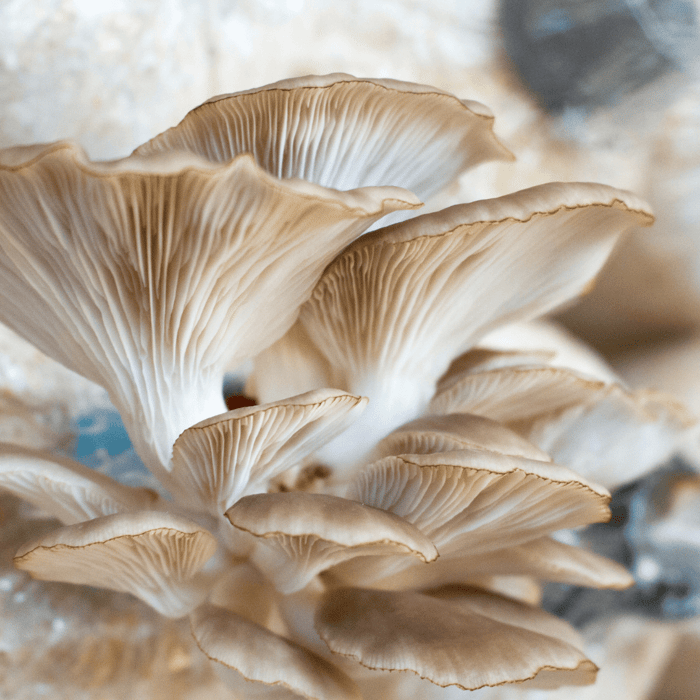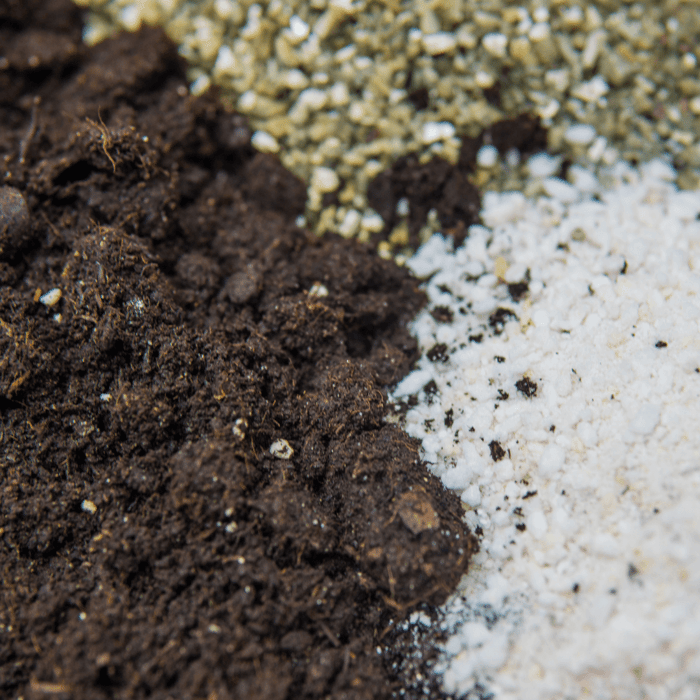Gardening in an apartment can seem daunting, but you can create a thriving indoor garden with some creativity and planning. Do you live in an apartment but are short on space or want to grow some fruits and vegetables? This in-depth guide will provide step-by-step instructions to transform your apartment into a lush green haven, even with limited space. So let's explore how to start gardening in an apartment.
Table of Contents
- Why Start an Apartment Garden?
- Choosing the Right Plants for Your Apartment
- Setting Up Your Indoor Garden
- Window Boxes and Hanging Baskets
- Watering and Maintenance
- Growing Food in Your Apartment
- Urban Farming and Community Gardens
- Tips for Green Thumbs in Small Spaces
Why Start an Apartment Garden?
Whether you have a green thumb or are a beginner, gardening in an apartment offers a unique opportunity to connect with nature, even in an urban environment. Apartment gardening has numerous benefits, making it a rewarding and fulfilling hobby for people of all skill levels:
-
Reduces stress and improves mental well-being: Gardening has therapeutic effects on the mind, helping to lower stress levels, boost mood, and improve overall mental health. Tending to your plants can provide a sense of accomplishment and purpose, fostering a positive outlook on life.
-
Acts as a form of exercise: Gardening tasks like watering, pruning, and repotting can help improve flexibility, strength, and cardiovascular health. Plus, the physical activity involved in maintaining your garden is an enjoyable way to stay active without feeling like a chore.
-
Enhances air quality by absorbing carbon dioxide and releasing oxygen: Indoor plants help purify the air by removing harmful toxins and releasing oxygen. They can also increase humidity levels, which can be beneficial during dry months or in air-conditioned environments.
-
Can provide fresh, organic produce for a healthier diet: Growing your fruits, vegetables, and herbs ensures access to fresh, pesticide-free produce, promoting a more nutritious diet and lifestyle.
Popular Herb Seeds for Planting | 35 Variety Pack
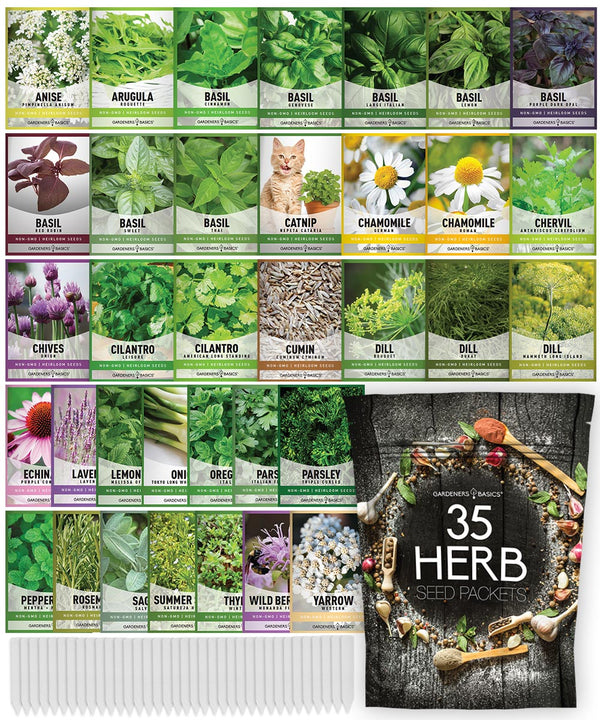
$29.95
$49.95
Heirloom, non-GMO herb seeds for indoor and outdoor home gardens! Introducing our 35 Herb Seeds Variety Pack, the ultimate selection for any herb garden enthusiast! This premium assortment includes heirloom herb seeds that are non-hybrid, open-pollinated, and non-GMO, ensuring you get only… read more
Choosing the Right Plants for Your Apartment
Your plant selection is crucial for a successful apartment garden. Here are some factors to consider when choosing plants:
-
Light requirements: Determine the direction your windows face and how much light they receive throughout the day. Choose plants that require a similar light intensity. For example, some herb plants can tolerate low light conditions, while succulents and flowering plants often need bright, indirect light.
-
Size: Opt for plants that will fit in your space without overcrowding. Small potted plants, hanging plants, and dwarf varieties are great options. Be mindful of the mature size of your plants, as some can grow quite large and may not be suitable for small apartments.
-
Maintenance: Some plants require more care than others. If you are a beginner, start with low-maintenance plants like herbs and houseplants. As you gain experience and confidence, you can experiment with more demanding varieties, such as orchids or bonsai trees.
-
Purpose: Decide whether to grow plants for aesthetic purposes, air purification, or plants for food production. This will help narrow down your choices. For example, ferns and ivy are excellent for improving air quality, while herbs and dwarf fruit trees can provide fresh meal ingredients.
Setting Up Your Indoor Garden
To set up your indoor garden, follow these steps:
- Choose the location: Identify a spot with adequate light, preferably near a window or glass door. Remember that some plants can tolerate lower light conditions, so don't worry if you don't have the sunniest apartment. Just be sure to choose plants suited for your specific light situation.
-
Select containers: Use pots with drainage holes to prevent overwatering. Window boxes, hanging baskets, and vertical planters are excellent space-saving options. When selecting containers, consider the materials as well. Terra cotta pots are porous and can help prevent overwatering, while plastic pots are lightweight and suitable for hanging plants.
-
Invest in grow lights: Consider using grow lights if your apartment doesn't receive enough natural light. LED or fluorescent lights are energy-efficient options. Be sure to research the specific light requirements of your chosen plants, as different species have varying light needs.
-
Prepare the soil: Opt for a high-quality potting mix, and consider adding perlite, vermiculite, or coco coir for better drainage and aeration. Healthy soil is essential for strong root development and overall plant health. Don't use garden soil; it can be too heavy for indoor containers and may introduce pests or diseases.
-
Plant your seeds or seedlings: Follow the instructions on the seed packet or plant label for planting depth and spacing. For heirloom seeds, be sure to follow specific guidelines for optimal germination. Proper planting will help ensure your plants have the best chance of thriving in your apartment garden.
-
Fertilize: Use organic fertilizers like compost, worm castings, or liquid seaweed to provide plant nutrients. Regular feeding is essential for maintaining healthy, vibrant plants. Follow the recommended fertilization schedule for your specific plants, as over-fertilizing can harm their health.
Window Boxes and Hanging Baskets
In small apartment spaces, it's essential to make the most of every inch available, including utilizing vertical space. Window boxes and hanging baskets are perfect solutions for apartment gardeners looking to maximize their growing area while adding a touch of greenery to their living space. These innovative gardening methods allow you to grow various plants, from herbs and small vegetables to decorative flowering plants, without wasting valuable floor space.
Window boxes and hanging baskets make the most of your vertical space and add an appealing visual element to your apartment. Both options can be customized to suit your style and preferences, creating a unique, personalized garden oasis. By carefully selecting the right plants and containers, you can create a thriving apartment garden that brings beauty, fresh air, and fresh produce to your home.
-
Window boxes: Ideal for growing herbs, small vegetables, and flowering plants. Ensure your window box has drainage holes and is securely fastened to the window sill. Select plants with similar light and water requirements to ensure they thrive in the same box. Consider adding trailing plants like ivy or petunias for added visual interest.
-
Hanging baskets: Great for trailing plants like ivy, ferns, and spider plants. Choose a lightweight potting mix to prevent the basket from becoming too heavy. Be mindful of the weight limit for your ceiling hooks or brackets. Hanging baskets can also be used for growing small fruiting plants, like strawberries or cherry tomatoes, as they allow the fruit to hang naturally and avoid contact with the soil, reducing the risk of rot.
Watering and Maintenance
Maintaining a healthy apartment garden requires consistent care and attention to ensure your plants thrive. Watering and general maintenance are crucial aspects of gardening that contribute to the overall well-being of your indoor plants. Proper care not only keeps your plants looking their best, but it also helps to prevent common problems like pests and diseases. Establishing a consistent routine for watering, pruning, and other maintenance tasks will go a long way in helping your apartment garden flourish.
As you become more familiar with your plants' needs, you'll be better equipped to provide the appropriate care. Attention to their requirements and adjusting your maintenance routine are key to fostering a successful indoor garden. Following some essential guidelines for watering and maintenance, you can create a thriving and beautiful apartment garden that brings joy and serenity to your living space.
-
Water your plants: When the top inch of the soil feels dry to the touch. Be careful not to overwater, as this can lead to root rot. Use a watering can with a long spout for easier access to hanging plants and window boxes. Remember that different plants have different water needs, so adjust your watering schedule accordingly.
-
Prune and deadhead: Regularly remove dead or yellowing leaves and spent flowers to encourage new growth and maintain the overall health of your plants. Pruning can also help keep a compact size, ensuring your plants don't outgrow their allotted space. In addition, regular pruning can stimulate the production of more flowers or fruits in certain plants.
-
Monitor for pests: Check for common indoor pests like aphids, spider mites, and mealybugs. Use insecticidal soap or neem oil to treat infestations. Prevention is key, so inspect new plants before bringing them into your apartment and keep them clean and healthy to minimize the risk of pest infestations.
-
Rotate your plants: Rotate your plants every few weeks to ensure they receive even light exposure. This helps to prevent plants from becoming lopsided or growing too much in one direction. Regular rotation can also improve air circulation, which can help prevent diseases like powdery mildew and fungal infections.
-
Repot as necessary: As your plants grow, they may need to be repotted into larger containers to accommodate their expanding root systems. Signs that your plant needs repotting include roots growing out of the drainage holes, stunted growth, or becoming top-heavy. Choose a container that is 1-2 inches larger in diameter than the current pot, and use fresh potting mix to give your plant a nutrient boost.
Growing Food in Your Apartment
Growing food in your apartment is an excellent way to enjoy fresh produce while saving money. Here are some tips for growing food in small spaces:
-
Choose compact varieties: Opt for dwarf or bush varieties of fruits and vegetables, such as cherry tomatoes and mini bell peppers, and compact herbs, like basil and parsley. These smaller varieties are more suited to apartment living and will not require as much space as their larger counterparts.
-
Utilize vertical space: Use vertical planters, trellises, or hanging pots to grow climbing plants like beans, peas, and cucumbers. Vertical gardening can help maximize your growing area, allowing you to produce more food in a limited space.
-
Grow microgreens: Microgreens are nutritious, fast-growing, and can be grown in shallow containers on a windowsill. They make an excellent addition to salads, sandwiches, and smoothies, providing fresh flavor and nutrients.
-
Consider hydroponics: Hydroponic systems allow you to grow plants without soil, making them ideal for small spaces with limited access to natural light. Hydroponic setups can be more efficient regarding water and nutrient usage and often result in faster plant growth. Be prepared to invest time and money into setting up and maintaining your hydroponic system.
Herb Seed Assortment | 15 Variety Pack
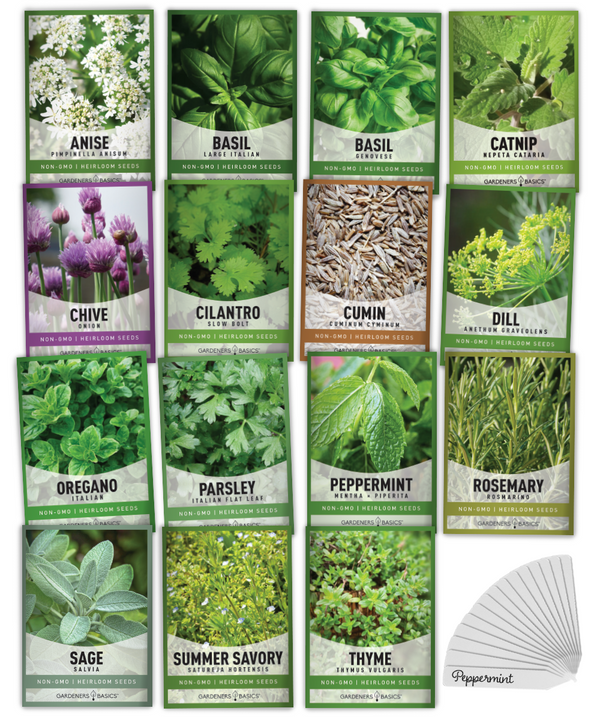
$19.95
Unlock the Power of Homegrown Herbs: 15 Heirloom Herb Seeds for Sustainable Gardening Introducing our 15 Herb Seeds Variety Pack—the ultimate collection for any home gardener, herbalist, or culinary enthusiast looking to grow fresh, flavorful herbs. Each of the 15 herb… read more
Urban Farming and Community Gardens
If your apartment doesn't provide enough space for your gardening aspirations, consider joining a community garden or participating in urban farming initiatives:
-
Community gardens: These shared spaces allow you to rent a plot and grow your plants alongside other gardeners. They are an excellent way to learn from experienced gardeners, share resources, and foster community. Many community gardens also organize workshops and events where you can expand your gardening knowledge and connect with like-minded individuals.
-
Urban farming: Get involved in local urban farming projects to contribute to sustainable food production in your city. Urban farms can be found on rooftops, balconies, and other underutilized spaces. By participating in urban farming, you can help promote local food production, reduce the environmental impact of food transportation, and support your community.
 Tips for Green Thumbs in Small Spaces
Tips for Green Thumbs in Small Spaces
Apartment gardening is an excellent way to bring nature into your living space, regardless of how much space you have. Even if you live in a small apartment, you can still enjoy the many benefits of gardening by utilizing creative solutions and maximizing your available space. Whether you're a seasoned or a beginner, apartment gardening offers a unique opportunity to cultivate your green thumb and create a thriving indoor garden.
In this guide, we've provided you with a step-by-step approach to starting your own apartment garden. From choosing the right plants and containers to proper watering and maintenance techniques, we've covered all the essential steps for a successful indoor garden. By following these tips and using your imagination, you can create a beautiful and functional apartment garden that brings joy, relaxation, and fresh produce to your home. So grab your gardening gloves, and let's get started on this exciting indoor gardening adventure!
-
Maximize natural light: Keep curtains and blinds open during the day to let in as much light as possible. If necessary, use mirrors or reflective surfaces to bounce light onto your plants, helping to increase the amount of light they receive.
-
Be creative with space: Utilize shelves, bookcases, and wall-mounted planters to maximize your available space. Think outside the box and experiment with unconventional gardening solutions, like repurposing old furniture or using shoe organizers as vertical planters.
-
Control humidity: Some plants, like ferns and tropical plants, require higher humidity levels. Group these plants together and place them on a tray filled with pebbles and water to increase humidity around them. Alternatively, regularly use a humidifier or mist your plants to maintain the desired moisture levels.
-
Stay organized: Keep a gardening journal to track your plants' progress, watering schedules, and any pest or disease issues. Staying organized will help you better understand your plants' needs and make it easier to troubleshoot any problems that may arise.
-
Educate yourself: Learn gardening techniques, plant care, and new varieties that may suit your apartment garden. Attend local workshops, join online gardening communities, or subscribe to gardening blogs and magazines to stay informed and inspired.
-
Be patient: Gardening is a learning process, and mistakes are inevitable. Don't be discouraged by setbacks; see them as opportunities to learn and grow as a gardener. With time, patience, and practice, your green thumb will flourish, and your apartment garden will thrive.
Following this step-by-step guide, you can transform your apartment into a lush, green oasis. With creativity, planning, and dedication, you can enjoy the numerous benefits of gardening, regardless of your living situation. So roll up your sleeves, get your hands dirty, and start cultivating your indoor garden today! Now that you know how to start gardening in an apartment will you give it a shot?



